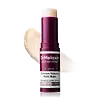What's inside
What's inside
 Key Ingredients
Key Ingredients

 Benefits
Benefits

 Concerns
Concerns

No concerns
 Ingredients Side-by-side
Ingredients Side-by-side

Caprylic/Capric Triglyceride
MaskingPolyglyceryl-2 Triisostearate
EmulsifyingPolyethylene
AbrasiveMicrocrystalline Wax
Emulsion StabilisingOctyldodecanol
EmollientTriethylhexanoin
Masking1,2-Hexanediol
Skin ConditioningCaprylyl Glycol
EmollientLimnanthes Alba Seed Oil
Skin ConditioningMacadamia Ternifolia Seed Oil
EmollientOlea Europaea Fruit Oil
MaskingPersea Gratissima Oil
Skin ConditioningSimmondsia Chinensis Seed Oil
EmollientEclipta Prostrata Extract
Skin ConditioningEclipta Prostrata Leaf Extract
Skin ConditioningGlycyrrhiza Glabra Root Extract
BleachingAdenosine
Skin ConditioningMoringa Oleifera Seed Oil
EmollientWater
Skin ConditioningButylene Glycol
HumectantGlycerin
HumectantPrunus Amygdalus Dulcis Fruit Extract
Skin ConditioningTremella Fuciformis Extract
HumectantTabebuia Impetiginosa Bark Extract
Skin ConditioningHydrolyzed Elastin
EmollientHydrogenated Lecithin
EmulsifyingGlucose
HumectantArginine
MaskingHydroxypropyl Methylcellulose
Emulsion StabilisingCitric Acid
BufferingCI 77220
Cosmetic ColorantAscorbic Acid
AntioxidantAcetyl Glucosamine
Skin ConditioningGlutathione
Collagen Extract
Skin ConditioningCaprylic/Capric Triglyceride, Polyglyceryl-2 Triisostearate, Polyethylene, Microcrystalline Wax, Octyldodecanol, Triethylhexanoin, 1,2-Hexanediol, Caprylyl Glycol, Limnanthes Alba Seed Oil, Macadamia Ternifolia Seed Oil, Olea Europaea Fruit Oil, Persea Gratissima Oil, Simmondsia Chinensis Seed Oil, Eclipta Prostrata Extract, Eclipta Prostrata Leaf Extract, Glycyrrhiza Glabra Root Extract, Adenosine, Moringa Oleifera Seed Oil, Water, Butylene Glycol, Glycerin, Prunus Amygdalus Dulcis Fruit Extract, Tremella Fuciformis Extract, Tabebuia Impetiginosa Bark Extract, Hydrolyzed Elastin, Hydrogenated Lecithin, Glucose, Arginine, Hydroxypropyl Methylcellulose, Citric Acid, CI 77220, Ascorbic Acid, Acetyl Glucosamine, Glutathione, Collagen Extract
Caprylic/Capric Triglyceride
MaskingDicaprylyl Carbonate
EmollientHelianthus Annuus Seed Oil
EmollientSilica
AbrasiveTrioctyldodecyl Citrate
EmollientSynthetic Wax
AbrasiveSynthetic Fluorphlogopite
Vinyl Dimethicone/Methicone Silsesquioxane Crosspolymer
Polyethylene
AbrasiveBis-Behenyl/Isostearyl/Phytosteryl Dimer Dilinoleyl Dimer Dilinoleate
EmollientTocopheryl Acetate
AntioxidantRicinus Communis Seed Oil
MaskingPhytosteryl/Isostearyl/Cetyl/Stearyl/Behenyl Dimer Dilinoleate
Skin ConditioningMacadamia Seed Oil Polyglyceryl-6 Esters Behenate
EmollientCeresin
Emulsion StabilisingMicrocrystalline Wax
Emulsion StabilisingMelia Azadirachta Leaf Extract
Skin ConditioningMelia Azadirachta Flower Extract
Skin ConditioningCoccinia Indica Fruit Extract
Skin ConditioningCentella Asiatica Extract
CleansingSolanum Melongena Fruit Extract
Skin ConditioningCurcuma Longa Root Extract
MaskingOcimum Sanctum Leaf Extract
Skin ConditioningCorallina Officinalis Extract
Skin ConditioningAloe Barbadensis Flower Extract
EmollientSimmondsia Chinensis Seed Oil
EmollientSorbitan Olivate
EmulsifyingBisabolol
MaskingSorbitan Sesquioleate
EmulsifyingSilica Silylate
EmollientTocopherol
AntioxidantGlyceryl Behenate/Eicosadioate
EmollientPropylene Glycol Dicaprylate/Dicaprate
EmollientAmber Powder
Moringa Oleifera Seed Oil
EmollientDehydroacetic Acid
PreservativeCaprylic/Capric Triglyceride, Dicaprylyl Carbonate, Helianthus Annuus Seed Oil, Silica, Trioctyldodecyl Citrate, Synthetic Wax, Synthetic Fluorphlogopite, Vinyl Dimethicone/Methicone Silsesquioxane Crosspolymer, Polyethylene, Bis-Behenyl/Isostearyl/Phytosteryl Dimer Dilinoleyl Dimer Dilinoleate, Tocopheryl Acetate, Ricinus Communis Seed Oil, Phytosteryl/Isostearyl/Cetyl/Stearyl/Behenyl Dimer Dilinoleate, Macadamia Seed Oil Polyglyceryl-6 Esters Behenate, Ceresin, Microcrystalline Wax, Melia Azadirachta Leaf Extract, Melia Azadirachta Flower Extract, Coccinia Indica Fruit Extract, Centella Asiatica Extract, Solanum Melongena Fruit Extract, Curcuma Longa Root Extract, Ocimum Sanctum Leaf Extract, Corallina Officinalis Extract, Aloe Barbadensis Flower Extract, Simmondsia Chinensis Seed Oil, Sorbitan Olivate, Bisabolol, Sorbitan Sesquioleate, Silica Silylate, Tocopherol, Glyceryl Behenate/Eicosadioate, Propylene Glycol Dicaprylate/Dicaprate, Amber Powder, Moringa Oleifera Seed Oil, Dehydroacetic Acid
Ingredients Explained
These ingredients are found in both products.
Ingredients higher up in an ingredient list are typically present in a larger amount.
This ingredient is an emollient, solvent, and texture enhancer. It is considered a skin-softener by helping the skin prevent moisture loss.
It helps thicken a product's formula and makes it easier to spread by dissolving clumping compounds.
Caprylic Triglyceride is made by combining glycerin with coconut oil, forming a clear liquid.
While there is an assumption Caprylic Triglyceride can clog pores due to it being derived from coconut oil, there is no research supporting this.
Learn more about Caprylic/Capric TriglycerideMicrocrystalline Wax is created by de-oiling petroleum. It is highly refined and purified before being added to cosmetics.
Microcrystalline Wax is used to enhance the texture and create even consistency. It helps stabilize a product by preventing ingredients from separating.
Moringa Oleifera Seed Oil is the oil expressed from the seeds of Moringa oleifera plant. It is more commonly known as Moringa seed oil.
Moringa seeds have antioxidant, anti-inflammatory, and skin hydrating properties. These seeds are rich in oils, proteins, monounsaturated fats, and tocopherols.
As an emollient, moringa seed oil helps trap moisture in the skin by creating a film on top. This helps keep your skin hydrated and soft.
Many compounds in moringa seed oil are antioxidant and anti-inflammatory. These compounds include Vitamin E. , catechins, ferulic acid, and more.
Another compound found in Moringa seed oil is oleic acid.
Moringa trees are native to the Himalayan mountains.
This ingredient may not be fungal-acne safe.
Learn more about Moringa Oleifera Seed OilPolyethylene is a synthetic ingredient that helps the skin retain moisture. It is a polymer.
It is also typically used within product formulations to help bind solid ingredients together and thicken oil-based ingredients. When added to balms and emulsions, it helps increase the melting point temperature.
This oil comes from the seeds of the desert shrub called Jojoba. It is more commonly known as jojoba oil, a non-comedogenic oil.
Jojoba oil does not contain fragrance and has many fatty-acids, making it a great soothing ingredient.
It also contains Vitamin E, a great moisturizing ingredient. Vitamin E is also an antioxidant and protects your skin against oxidative damage.
This ingredient humectant properties, meaning it helps draw moisture from the air. This helps keep your skin hydrated.
While jojoba has antibacterial properties, it is only able to kill some strains of bacteria.
Studies also show it helps in wound healing. In fact, Indigenous cultures have used jojoba as a moisturizer and to help treat burns for centuries.
Fun fact: Jojoba oil similar to natural human skin sebum, so it has a great effect on dry skin. It is also promising with helping to regulate sebum production.
Due to its fatty acid content, Jojoba oil may not be fungal acne safe. We recommend speaking with a professional if you have any concerns.
Learn more about Simmondsia Chinensis Seed Oil